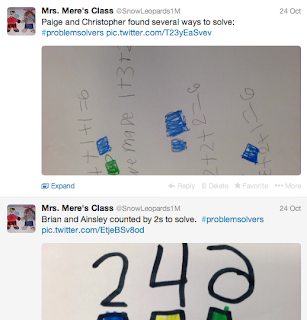Sometimes it's so hard to just wait for students to discover something. However, when the moment finally arrives and students authentically come to this new realization, discovery, or understanding it is all worth it! Such was the case last week when I read Spoon by Amy Krouse Rosenthal (@missamykr) to my class to talk about the author's message. My class loved this book in which poor Spoon just isn't happy with his life. Knife and Fork have it so much better. In the end, of course, Spoon decides maybe he does have it pretty good. The conversation that followed was full of possibilities for what the author wanted us to know.
When I saw how much they loved Spoon I knew I needed to share another book by Amy Krouse Rosenthal. After lunch that day I decided to read Exclamation Mark. I had been waiting for just the right moment to bring out this book and thought this might just be it. I'm not joking when I say the kids actually broke out in applause as I closed that book. I then said, "You know, Amy Krouse Rosenthal has written a few other books that we've read this year." I reached near my easel and pulled out Yes Day. My students loved this book when we read it earlier in the year. What kid doesn't wish every day was Yes Day? They applauded yet again. I paused like I was really trying to think and added, "She also wrote the OK Book." One of the students raced up to grab it. The excitement was building as students tried to puzzle out what other books she might have written.
"We should make a basket for her books," Paige quickly added. The students all nodded in agreement. "Let's see what else she has written," I said I as pulled up Shelfari and typed in her name. At this point, I just couldn't keep up with them. There were shouts of books we'd read that students were realizing had been written by Amy Krouse Rosenthal. "She wrote Little Oink and Little Hoot," they chimed. Then of course there were conversations of those we should definitely read. We added a few "PLAN TO READ" titles to our shelf including: Chopsticks (they'd seen Chopsticks in Spoon), It's Not Fair, Little Pea, and Wumbers.
Had I just placed Amy Krouse Rosenthal's titles in our basket at the beginning of the year they likely still would have learned who she was as an author, but the joy behind this discovery and the excited conversation of our community has likely created an appreciation for Rosenthal's work that will stay with them.















